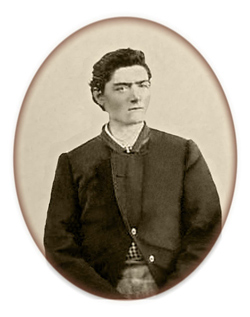DNA research has confirmed that bones located in an axe box, in a disused Melbourne prison are those of the infamous Tipperary-Australian bushranger Ned Kelly, whose father, John Kelly, was transported from Moyglass, near Fethard, Thurles, Co Tipperary for stealing two pigs.
Edward “Ned,” Kelly (1854–80) was the last and most controversial of Victorian bushrangers. Pursued by police for robbery and murder, he was finally captured and hanged at the Melbourne Gaol, after a gun fight with police at Glenrowan in 1880.
Kelly survived a shootout with police in 1878 which saw himself, his brother Dan, and friends Joe Byrne and Steve Hart slapped with an £8,000 bounty, the largest reward ever offered in the British Empire, for anyone who found the gang dead or alive.
Considered by some as a cold-blooded killer, he became famous for wearing his home-made body armour. Kelly has also been described as a symbol of Irish-Australian resistance to the British ruling classes in Australia, during this period, taking on the might of the colonial authorities, at what he saw as corrupt police, injustice and greedy land barons.
In a final gun battle at Glenrowan, three of the gang members died and Kelly, dressed in home-made plate metal armour and helmet, was later wounded and arrested. The captured Kelly spent his last days in the same Gaol as his mother who was also serving a sentence in the women’s wing. Kelly was eventually sentenced to death for murder, following his gang’s killing of three policemen, and he was hanged in Melbourne Gaol on November 11th 1880.
After his execution, Kelly, was originally buried in a mass grave at the Old Melbourne Gaol, however, his remains, together with 33 other prisoners, were reburied in Pentridge Prison in 1929. The mass grave was excavated again in 2009, and an almost complete skeleton was found in a wooden axe box at the prison site, thus beginning the quest to identify which bones belonged to Ned Kelly.
Twenty months of scientific examination, involving forensic scientists in Australia and Argentina, using a DNA sample provided by Melbourne art teacher Leigh Olver, latter Kelly’s sister Ellen’s great-grandson, have now confirmed that the bones are indeed the remains of the infamous bushranger.
The outlaw’s skull, which was stolen from a glass display case in 1978, still remains missing and reports that the Victorian government will consider putting the skeleton on display, has been greeted with anger by another relative. Anthony Griffiths, a great-grandson of Kelly’s sister Grace, believes that a public exhibition of Kelly’s bones would be macabre and disgusting.
Rolling Stone Mick Jagger played the lead role in the 1970 movie “Ned Kelly” while Heath Ledger starred as the bandit in a 2003 remake, that also featured Orlando Bloom and Geoffrey Rush.
Kelly has also been the inspiration for many books, most notably Peter Carey’s novel “True History of the Kelly Gang“, which won the 2001 Booker Prize.


Leave a Reply